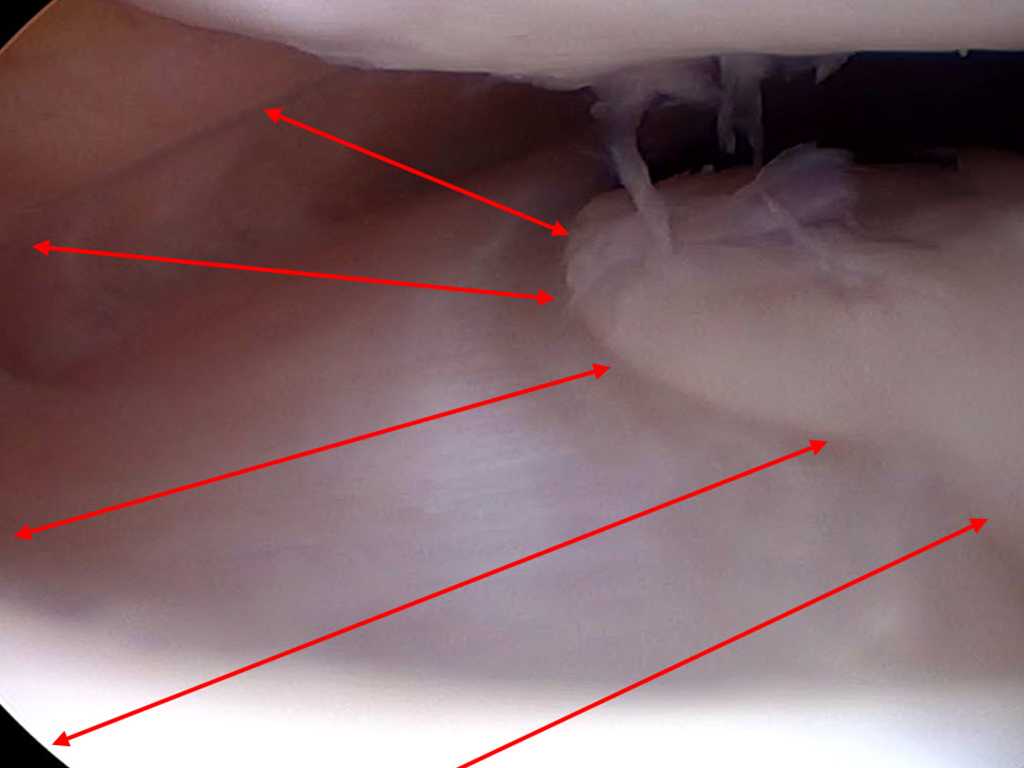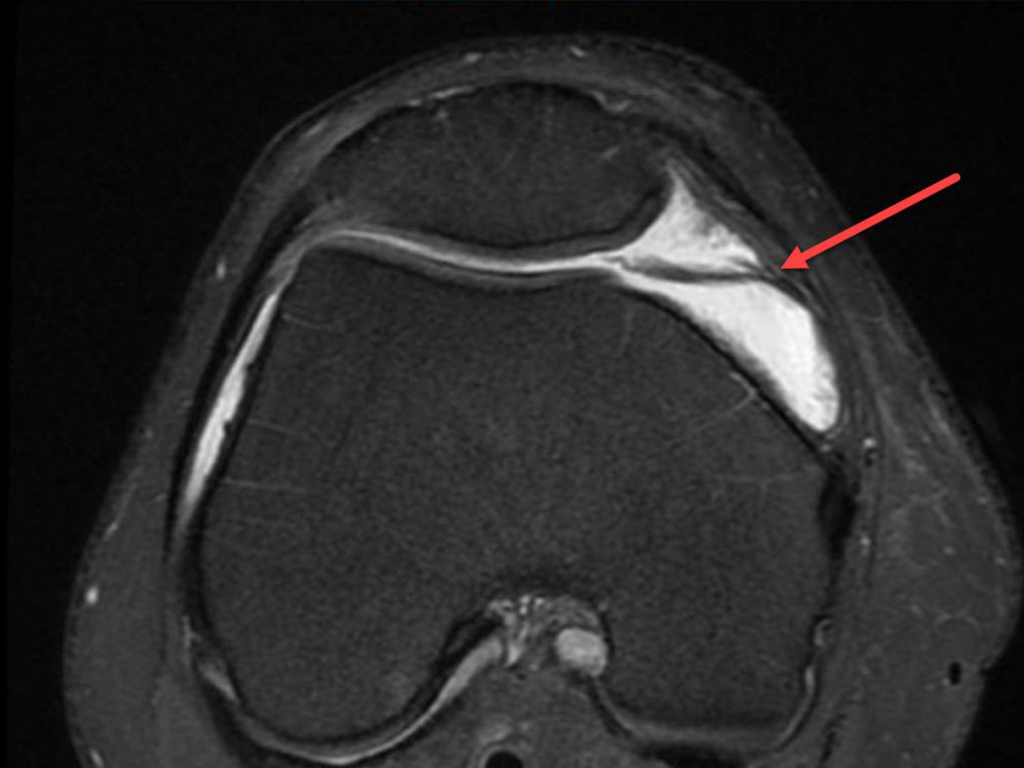Anatomy & Function
The plica mediopatellaris is a fold of the joint mucosa (synovial fold) located in the knee joint between the thigh bone (femur) and the kneecap (patella). The plica is a relic from the embryonic period. In early embryonic development, several joint cavities grow together into one. If their partition walls do not completely regress, various mucosal folds (plicae) may remain in different places.

Symptoms & Complaints
Many people with a plica have no problems at all. However, if the plica is more prominent, irritation can occur.
The most common complaints:
- Pain on exertion, usually on the inside or back of the kneecap.
- "creaking" or "cracking"ofthe joint in a certain position while bending the joint
- a feeling of "blocking" during the stretching movement
- Stiffness of the joint after sitting for a long time
- In some cases, the thickened plica is also palpable under the skin, or there is swelling of the entire knee joint
Causes
The most common causes are overuse of the knee joint with strenuous activities that involve repeatedly bending and then straightening the knee (such as running, cycling, or exercises on the "stepper"). The plica itself, but also the tissue around it, swells and becomes painful. This thickening then rubs against the cartilage inside the knee joint and, with continued stress, can lead to damage to the joint cartilage or to joint inflammation (=arthritis).
Diagnosis
The first step in diagnosing plica syndrome is to try to pinpoint the exact location of the pain or to identify any thickening that has occurred in the area of the kneecap. Often, you can also feel the plica rubbing in the knee joint when you move. It is also possible for the experienced knee specialist to feel the thickened plica on the thigh bone with a finger during flexion and extension.
An MRI examination can also be helpful in establishing the diagnosis, but it does not always have to produce clear findings. In some patients, definitive proof of plica syndrome is only provided by arthroscopy (knee arthroscopy).

Magnetic resonance image of a mucosal fold (plica mediopatellaris)
Treatment
Conservative therapy
Treatment of a plica is only necessary if it actually leads to knee problems. Often conservative treatment can be given with the following measures.
The following therapies are possible:
- Rest (sports break): The irritated plica needs rest and therefore also a break from sports. Stressful sporting movements in which the knee joint is often bent should be reduced or avoided altogether.
- Pain and anti-inflammatory medications: The use of "anti-inflammatory" drugs such as ibuprofen, diclofenac can be administered over a period of time, but in our experience they are not effective for scarring, highly thickened and inflamed mucosal folds.
- Physiotherapy: Electrotherapy with ultrasound and iontophoresis can be used for physiotherapy. However, measures to improve muscular imbalances, leg axis training (e.g. compensation of valgus load during jumping), stabilisation of the lumbar spine, pelvic control with strengthening of the often weakened hip muscles (gluteus medius, tensor fasciae latae, etc.), trigger point treatments and improvement of disturbed or deficient neuromuscular control of the affected leg are much more promising.
- Regenerative cell therapy: Cortisone is a drug for emergencies because of its known side effects on tendons and ligaments. If no other therapy is effective, cortisone can be administered in the form of injections at very long intervals. But not only do cortisone injections pose a danger to the knee joint if they are administered too frequently and in short intervals, the cartilage also suffers massively. Another option is now regenerative cell therapy, which has so far shown good results in muscle and tendon diseases and is also an option as an anti-inflammatory therapy before surgery.
Operation
After an unsuccessful attempt at conservative therapy, before a possible arthroscopic removal of the plica, it is important to again clarify by differential diagnosis whether the plica is primarily responsible for the complaints despite its existence in the magnetic resonance imaging.
Our procedure for differential diagnostic clarification:
- Examination for leg axis malalignment and exclusion of insufficient leg axis control (neuromuscular loss of control) in the provocation test single-legged squat stance and jumping load
- Examination for muscular imbalances of the lumbar-pelvic-leg muscles
- Examination and measurement of the entire pelvic-hip-leg musculature for muscular weaknesses (e.g. with dynamometer).
- Examination of the lumbar spine, e.g. for structural and functional instabilities
- Examination for insertion tendopathies (e.g. adductors at the tub.adductorium)
Arthroscopic surgery
Under general or regional anaesthesia, two short incisions about 1 cm long are made at the front of the knee to allow irrigation fluid and the instruments to be introduced into the knee joint. The joint structures (arthroscopy) are visible on the screen. The fold of mucous membrane (plica) is then removed with a so-called shaver (a motor-driven cutting instrument).
Aftercare
More information will follow shortly.
FAQs
More information will follow shortly.



